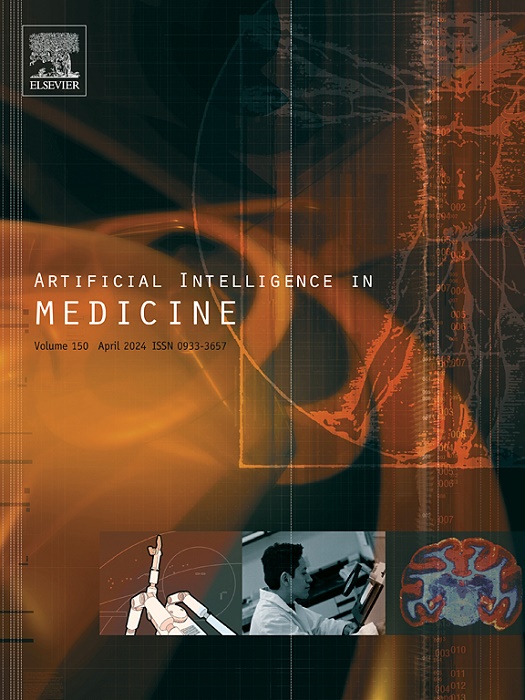CATI:英国生物银行研究中诊断代码分配的医学情境增强框架
IF 6.2
2区 医学
Q1 COMPUTER SCIENCE, ARTIFICIAL INTELLIGENCE
引用次数: 0
摘要
诊断代码是疾病或医疗条件的标准代码格式。本研究旨在为大型生物库中的患者分配诊断代码,特别是解决一些患者缺失代码的问题。这对下游疾病相关任务至关重要。虽然最近的方法主要依赖于结构化的生物库数据进行代码分配,但它们往往忽略了生物库中的文本信息和疾病编码系统的层次结构所提供的有价值的医学背景。为了解决这一差距,我们开发了CATI,这是一种医学背景增强的诊断代码分配框架,通过整合来自关键特征和疾病层次的文本细节。这项研究基于英国生物银行的数据,并将Phecodes和ICD-10代码视为标准的疾病格式。我们首先使用它们的正式名称表示十个信息丰富的编码特征,然后将它们作为文本嵌入集成到CATI中,通过对预训练的语言模型BioBERT进行及时调整来实现。考虑到诊断码的层次结构,我们开发了一种新的卷积层,可以在相邻的诊断码之间有效地传播对数。评估结果表明,CATI在Phecodes和ICD-10代码方面都优于现有的最先进的方法,对未见疾病代码的平均AUROC至少提高了5.16%,对训练实例范围为(1000,10000)的疾病代码的平均AUPRC提高了8.68%。该框架有助于形成定义良好的下游研究队列,并通过纳入重要的医学背景,为解决复杂的医疗保健任务提供了独特的视角。本文章由计算机程序翻译,如有差异,请以英文原文为准。
CATI: A medical context-enhanced framework for diagnosis code assignment in the UK Biobank study
Diagnosis codes are standard code format of diseases or medical conditions. This study is aimed at assigning diagnosis codes to patients in large-scale biobanks, particularly addressing the issue of missing codes for some patients. This is crucial for downstream disease-related tasks. While recent methods primarily rely on structured biobank data for code assignment, they often overlook the valuable medical context provided by textual information in the biobanks and hierarchical structure of the disease coding system. To address this gap, we have developed CATI, a medical context-enhanced framework for diagnosis Code Assignment by integrating Textual details derived from key features and disease hIerarchy. The study is based on the UK Biobank data and considers Phecodes and ICD-10 codes as standard disease formats. We start by representing ten informative codified features using their formal names and then integrate them into CATI as text embeddings, achieved through prompt tuning on the pre-trained language model BioBERT. Recognizing the hierarchical structure of diagnosis codes, we have developed a novel convolution layer in our method that effectively propagates logits between adjacent diagnosis codes. Evaluation results demonstrate that CATI outperforms existing state-of-the-art methods in terms of both Phecodes and ICD-10 codes, boasting at least a 5.16% improvement in average AUROC for unseen disease codes and an 8.68% rise in average AUPRC for disease codes with training instances ranging in (1000,10000]. This framework contributes to the formation of well-defined cohorts for downstream studies and offers a unique perspective for addressing complex healthcare tasks by incorporating vital medical context.
求助全文
通过发布文献求助,成功后即可免费获取论文全文。
去求助
来源期刊

Artificial Intelligence in Medicine
工程技术-工程:生物医学
CiteScore
15.00
自引率
2.70%
发文量
143
审稿时长
6.3 months
期刊介绍:
Artificial Intelligence in Medicine publishes original articles from a wide variety of interdisciplinary perspectives concerning the theory and practice of artificial intelligence (AI) in medicine, medically-oriented human biology, and health care.
Artificial intelligence in medicine may be characterized as the scientific discipline pertaining to research studies, projects, and applications that aim at supporting decision-based medical tasks through knowledge- and/or data-intensive computer-based solutions that ultimately support and improve the performance of a human care provider.
 求助内容:
求助内容: 应助结果提醒方式:
应助结果提醒方式:


